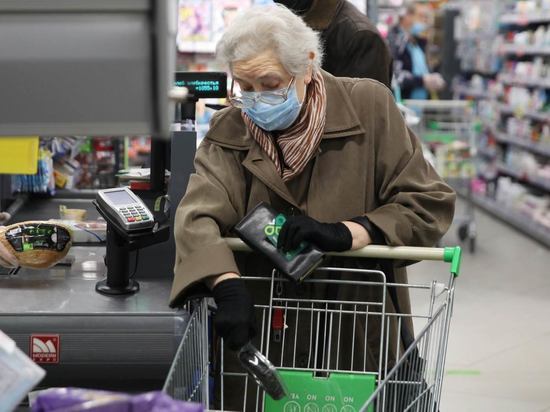Inaccuracies lie in the method of counting the poor
It's hard to believe, but, as they say, you can't argue against the truth. According to Rosstat, the proportion of poor citizens in Russia last year fell to a historic low. Those who found themselves at the bottom of life, compared with 2021, decreased by 1.7 million people, or 1.2%. In general, the low-income strata now make up less than 10% of the population.

In March of this year, the statistical agency counted 10.5% of poor Russians in the country, which turned out to be about 16 million people whose income is below 13.5 thousand rubles. Then the data began to be refined, and in the end it turned out that in fact they were not 10.5%, but 9.8%. That is 14.3 million! Historic low since 1992. We went to it long and hard, and only in 2012, when there were no economic sanctions against Russia, did we approach this cherished mark. But even then, the figure was still higher than in 2022: 10.7%.
Success in the fight against poverty is evident. Back in January, at the first meeting of the government this year, Vladimir Putin called the fight against poverty and social inequality in the country a priority. He called for the government to build the economic policy in such a way that it would lead to an increase in the real wages of Russians and a decrease in the share of the poor.
And here is the long-awaited breakthrough …
But why is it hard to believe in him? The past year has been extremely difficult for the Russian economy, everyone admits it. The beginning of a special operation in Ukraine, the introduction of “nuclear sanctions” against Russia… Spring was generally a nightmare for the ruble and for prices in stores. What happened in the entire 2022 global year? We managed to reduce poverty to a historical minimum.
There were creative initiatives. The Central Bank proposed to introduce an increased rate for the deposits of the poor, so that high interest would accrue on the amount of 200-300 thousand rubles. Which ones have not yet been determined, but certainly higher than the key rate.
The idea is certainly tempting. But where do the poor get such huge sums from? The option is not suitable for those who live from allowance to allowance.
Experts say that in order to successfully implement the anti-poverty program adopted in 2020, it is necessary to invest 500 billion rubles a year. But now such a maneuver is hardly possible. As you know, last year budget expenditures exceeded revenues by 3.3 trillion rubles. (Note that, according to some data, the first quarter of this year showed a federal budget deficit of 4 trillion rubles.) It is unlikely that the government had and will have the opportunity to take these same 500 billion from the treasury.
And in general, the fight against poverty is constantly postponed until better times — there are more important tasks. In the noughties, it was planned to overcome it altogether — completely and completely. However, then the dates began to shift. It was decided to halve the level of poverty by 2024, then by 2030…
We asked a professor at the Financial University under the Government of RF.
— By and large, there have been no fundamental shifts in the implementation of the planned programs. However, there are factors that have allowed us to reduce the degree of this problem.
—The number of officially registered unemployed citizens has noticeably decreased in the country. Since a significant part of them received benefits at a level below the subsistence minimum (PM), this immediately affected the number of Russians with incomes below this level. In 2022, we have a record low unemployment rate of 3.7.
Last year, due to high inflation, the government several times indexed pensions and benefits, as well as the minimum wage and PM. In addition, targeted lump-sum payments were made to different segments of the population. Depending on the period in which the calculations were made, payments could lead to the fact that certain groups of the population, including pensioners, could be above the poverty line. This is also a significant point.
The shortage of workers has affected the growth of wages in the country. Employers were forced to raise wages. An important point: according to the law, today the minimum wage must be higher than the PM. Those Russians who received a salary at the minimum wage level no longer fall into the category of statistical poor.
Yes, real incomes, taking into account the deductible tax, may be below the subsistence level. Statistics does not take such a moment into account, since it considers nominal incomes. In this regard, there are errors in this calculation method. By 2030, the poverty rate should decrease to 6.5%.


